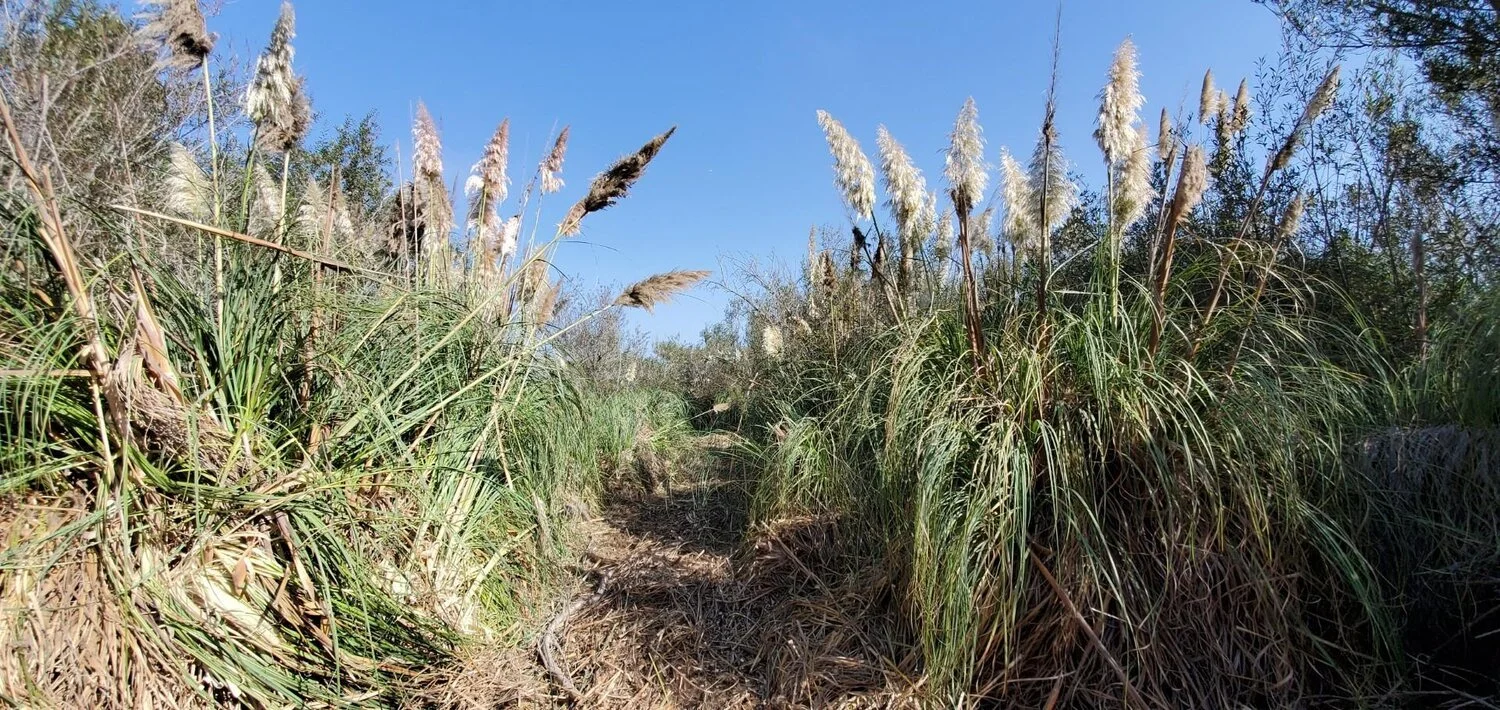Pampas Grass
Pampas grass has a striking appearance and has been a popular ornamental in California. It can grow to 10 feet tall, with large showy plumes. Native to the plains of Argentina, pampas grass is invasive in California, producing thousands of seeds a year, and is difficult to remove because of its sharp, sawlike blades. It has been a popular plant in American households since the middle of the 20th century. In recent years, it has become a difficult weed to remove.
In north coastal areas where forestry is dominant jubata grass at first was welcomed. Its harsh, cutting leaves (cortaderia, from an Argentinian word, has the same root as the Spanish cortar, to cut) kept deer out of reforested areas and protected tree seedlings from being browsed. Later, however, the grass itself crowded out the young seedlings. In the 1960s Georgia Pacific had to abandon 1,100 acres in California’s Humboldt County to jubata grass as there was no economical way to control it. At that time 7,000 additional acres were severely infested. The enormous increase in jubata grass over the past decade also has crowded out native vegetation, transforming beautiful coastal areas into monotonous prairies of dun-colored plumes that look like old dishrags on sticks.
The Los Padres National Forest in California, where weedy pampas grass (Cortaderia jubata) has gained a foothold and threatens native plants with obliteration. Simply cutting the plumes will not control the plant’s spread unless they are bagged early and repeatedly, since shoots are produced over a period of about three months. After cutting, the plumes still produce mature seed, and if they are not bagged the small, delicate seeds will be released and spread widely on the wind.
Contact Channel Islands Restoration For Your Habitat Restoration Needs

